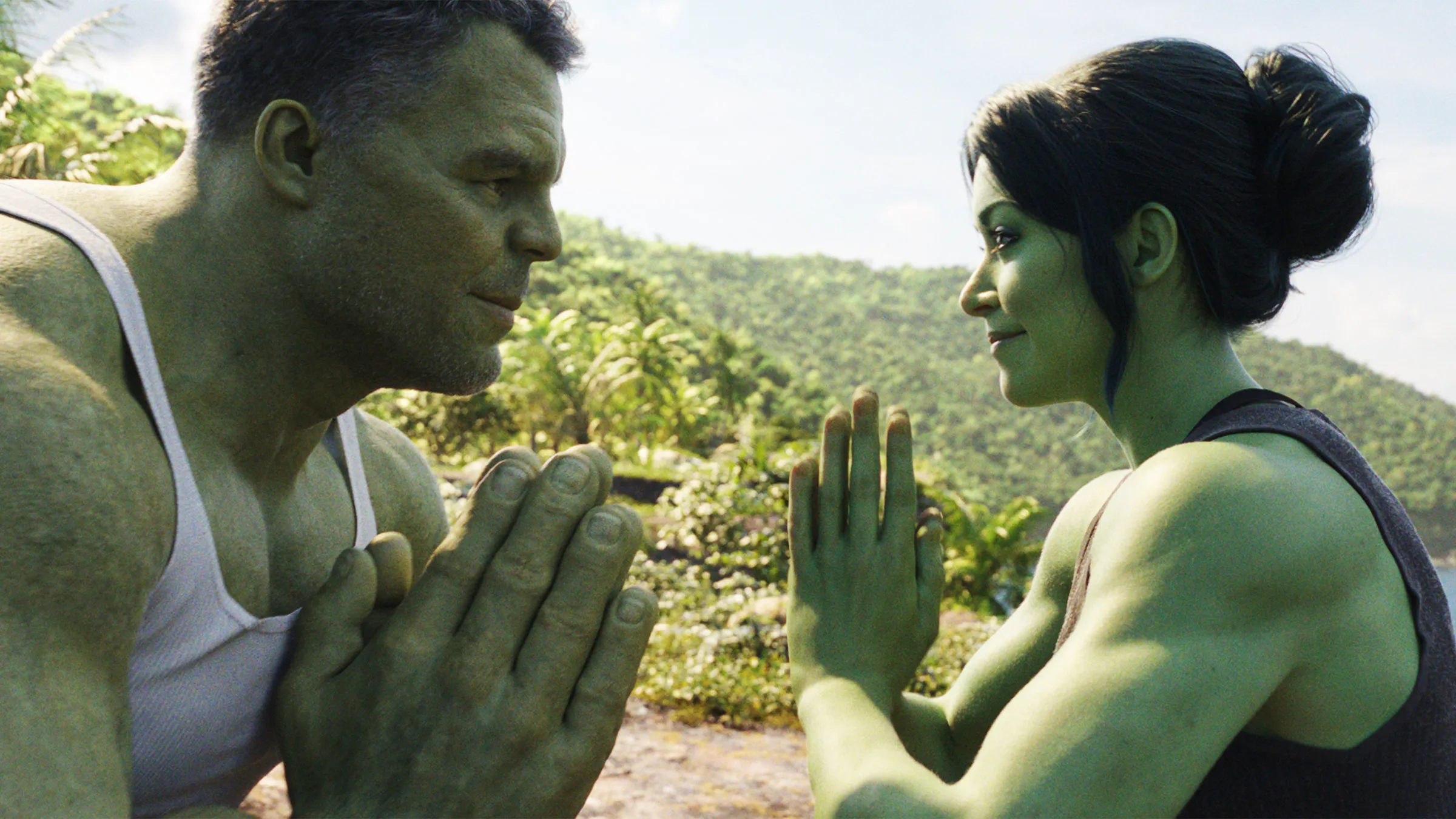So imagine my surprise when I settle into watching the latest offering from the Marvel Cinematic Universe only to hear the benefits of Dialectical Behaviour Therapy being declared by a main character. Because, I will admit, I was very surprised.
She-Hulk: Attorney at Law is the latest in an increasingly long line of vehicles for Marvel’s never-ending roster of super-characters. She-Hulk, also known as Jennifer Walters, is the cousin of Bruce Banner, the mean and green The Incredible Hulk. And in its opening episode, Jennifer, due to some convoluted plot twists and turns, ends up getting some of Bruce’s Gamma-Ray-infected, Hulk-causing blood synthesised into her own regular human blood stream, thus creating, yep, you guessed it – a female Hulk.
She-Hulk.
As Jennifer wrestles with the duality of being both Jennifer Walters and She-Hulk, her cousin, who has been through something similar, offers her some wise words: “Dialectical Behaviour Therapy allows us to hold two opposing truths at the same time.”

I’m not going to lie. I had to stop and rewind to make sure that I heard this correctly. Bruce Banner, The Incredible Hulk, is sat on a beach explaining the therapy model that I work with? And it makes sense? This can’t be right…., can it?
Turns out it can. Bruce Banner does discuss DBT and Mindfulness and the advantages of the therapy. Jennifer, unfortunately is a little judgemental and associates Mindfulness with more spiritualistic and body-shaping forms of Yoga, to which Bruce responds with: “Dialectical Behaviour Therapy is an evidence -based psychotherapy it’s clinical, not spiritual… It’s more about presence. About accepting the situation you’re in.”
Jennifer, who is not buying what her cousin is selling, makes a snarky remark and Bruce closes the topic with “I can see that you’re not ready for DBT so why don’t you get some rest and we’ll change tactics in the morning.”.
Yes! Amazing! I was ecstatic. Not only did Marvel, the world’s most profitable franchise, mention DBT – a therapy that I respect and admire – but it described it perfectly AND modelled the notion of inclusion and exclusion criteria. Jennifer wasn’t willing to cooperate with the treatment so she was excluded from it – Bruce didn’t try and shape the treatment to suit the client and he didn’t try to shape the client to suit the treatment – he simply remarked that DBT is not for her.
This is a very short scene in the debut episode – 60 seconds at most – but the producers of the show felt it important enough to include. Why? A treatment is suggested and rejected – why keep this scene in? Apart from a couple of jokes about the hero’s posterior, the scene has little impact. I would like to think that a writer of the show at one point just wanted to declare the virtues of this fantastic treatment. And remember, just because DBT isn’t suitable for our eponymous hero – that does not take away any of its advantages and benefits that Bruce Banner has experienced. And this is so relatable for clients across the globe.
Bruce, the psychotherapist in this scenario, believes that DBT will benefit Jennifer, the client. She mocks it and Bruce decides to take another direction. How many times has this happened to you? As a psychotherapist, you have deemed that a client has met all the inclusion criteria and is a suitable participant to the treatment model. And then you discover that one thing is missing – their commitment. What would you do in this situation? Do you agree to part ways? Do you refer the client to another treatment service? Do you work with the client to increase their commitment? Comment below and share your experiences.
Who knew that a show about a lawyer-turned-hulk could inspire a conversation about Inclusion and Exclusion criteria to the DBT model? What next? Is Spider-Man going to demonstrate how to feedback on DBT homework? Is Thor going to show us some interpersonal effectiveness skills? Is Ms Marvel going to reference walking the middle path? I doubt it, but I am definitely here for it.



0 Comments